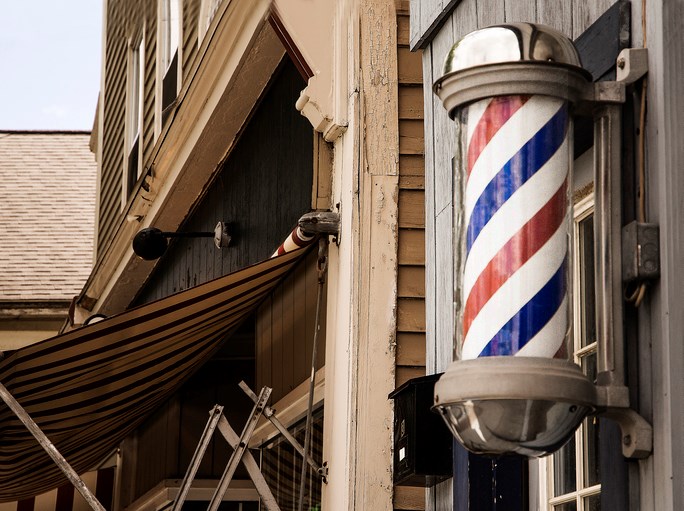An important figure in Prince George’s Black History is Charles Sager, a local business owner who famously sent a letter to city council calling out the racism and mistreatment of the Black community in the 1920s.
In its December meeting, the Prince George Heritage Commission discussed creating a procedure for honouring and recognizing influential people in our community's history and proposed creating a plaque of recognition for Sager.
Sager was a playwright, comedian, barber and a member of the city’s fledgling Black community comprised of about 25 to 30 residents in the early 1920s.
According to a biography written by the Prince George Heritage Commission, Sager was born in San Francisco and led an interesting life including living in Indianapolis, Chicago and New York before coming to Prince George in 1913 seeking new opportunities.
He worked as a playwright across the States, staging shows across the American Midwest through the late 1800s. In Chicago, he was a founding member of the Pekin Theatre, the first Black owned and operated theatre in the United States in 1905.
When he arrived in Prince George, he worked as a barber and opened a shop called the Metropolitan Baths which by 1915, he had moved to a location on Third Avenue and George Street.
However, the Black community in Prince George faced a lot of racism which reached a high point in the early '20s.
In 1921, there was a move to rid the city of its “undesirable” elements, ultimately meaning the twenty-five to thirty black residents of what was then called N* town, which was the name white residents gave to the area around Third Avenue and Quebec Street.
In April 1921, a fight broke out on Quebec Street between two groups of Chinese residents.
The fight was broken up by the Prince George Municipal Police, but it led Acting Mayor Barney Keegan to develop a strategy to clean up the city of those they deemed “undesirable”.
It wasn’t the Chinese community who were targeted by Keegan’s plan, but instead the city’s small Black population.
Keegan instructed the city clerk “to forward to the police commissioners a strong expression of the council’s desire to have the city cleared of undesirables, to have drunken drivers of motor cars, speeding, drunkenness, bootlegging, etc., wiped out, and further asking that all undesirables be ordered out of town, especially referring to N* town”.
This inspired Sager to write an open letter to the Mayor and members of city council where he respectfully lectured the city’s leaders on racism:
“The inference is that there is a certain part of Prince George known a “n* town” where people of this particular group or race are gathering in such numbers as to warrant the board of Police Commissioners in taking action against them.
That they are vicious, immoral, of no certain occupation and consequently undesirable. No reservations are made; no discriminations. It is “the n*” of the streets with “the n*” of business. This is the negro’s point of view, and it is a direct challenge to every self respecting Negro in Prince George – in Canada.
It is a vulgar appeal to insult and violence; it demoralizes, debases and promotes hate and envy – the very ground root of race prejudice. The apology often made is, “it is not the color aimed at, but the conduct.” We sincerely wish this were the truth, but it is not the truth, and they who say it know it is not the truth.
By such unjust methods, and coming from those of whom you would least expect – the unkindest cut of all – we are forced to bear the full responsibility of the wicked and vicious members of our race, forced into the lowest of menial occupations and then despised for doing so. Some will say that they use the word “n*” with no malice or thought of prejudice, and as a description of the color of a people, being corelative with white, yellow, etc. This will not hold.
Black is the correlative of white, and “n*” does not describe color, since all persons designated as “n*s” are by no means black, even in Africa... To call a Negro “n*” is to belittle and destroy the last vestige of hope, manhood and self-respect left in him, after two hundred years of the most cruel slavery on earth.
We feel reasonable sure that under normal conditions thinking men would not close the door of ambition and opportunity in the face of any man on account of his color; and yet it is the very thing done, and the principal cause of race antagonism today.”
The Heritage Commission notes that Sager quoted H.G. Wells and US Civil War General Benjamin Butler in opposing racism and upholding the patriotism of black soldiers.
He concluded by asking for nothing more than “a square deal; the equality of opportunity and of privilege from the powers that be, and the honest endeavor to cultivate interracial respect.”
After this letter was published no expulsion of the Black community in Prince George occurred.
Sager continued living in Prince George where he was an active member of the cultural scene managing a minstrel show for the Methodist Ladies Aid, was a member of the Pierrot Troupe that travelled the central interior in the early 20s; and a member of the Prince George Male Glee Club.
His wife, Willa, died on November 20, 1926, and had a funeral at Knox Presbyterian Church. Her obituary said she “was an active worker in local charities and a large number of floral offerings testified to the esteem in which she was held throughout the city.”
Sager continued to barber in the city for the next few years, but decided to return to Brooklyn New York at the end of 1929.
He died in New York at the age of 89 in 1957.




